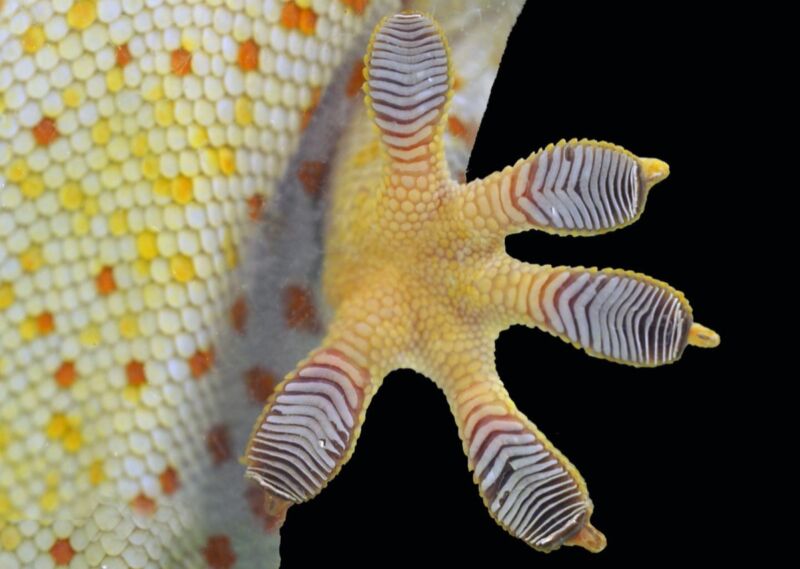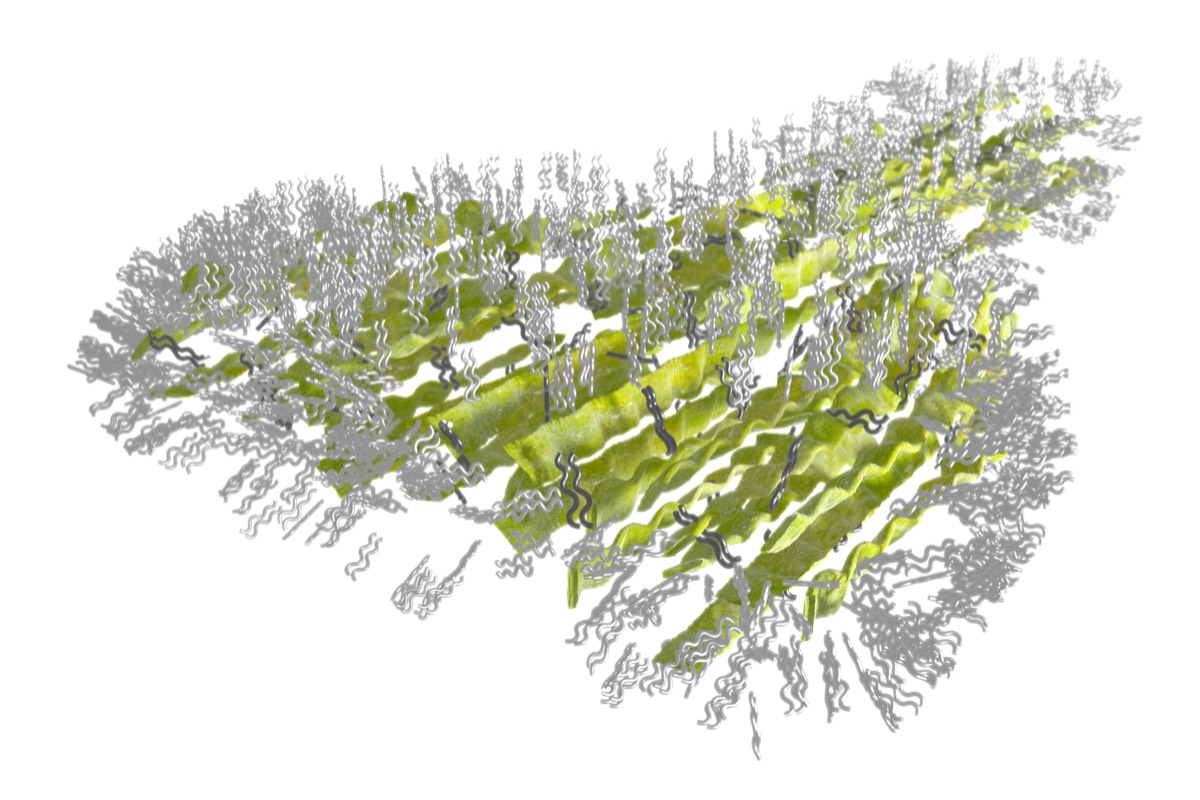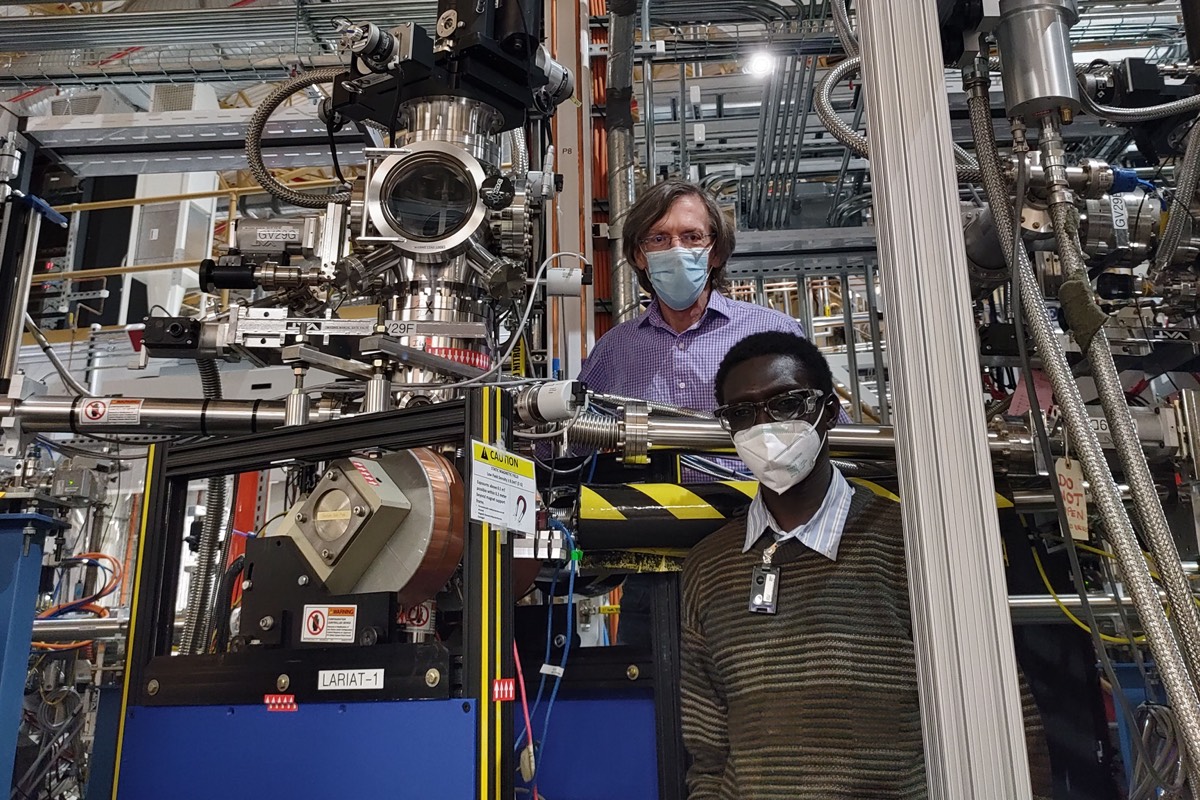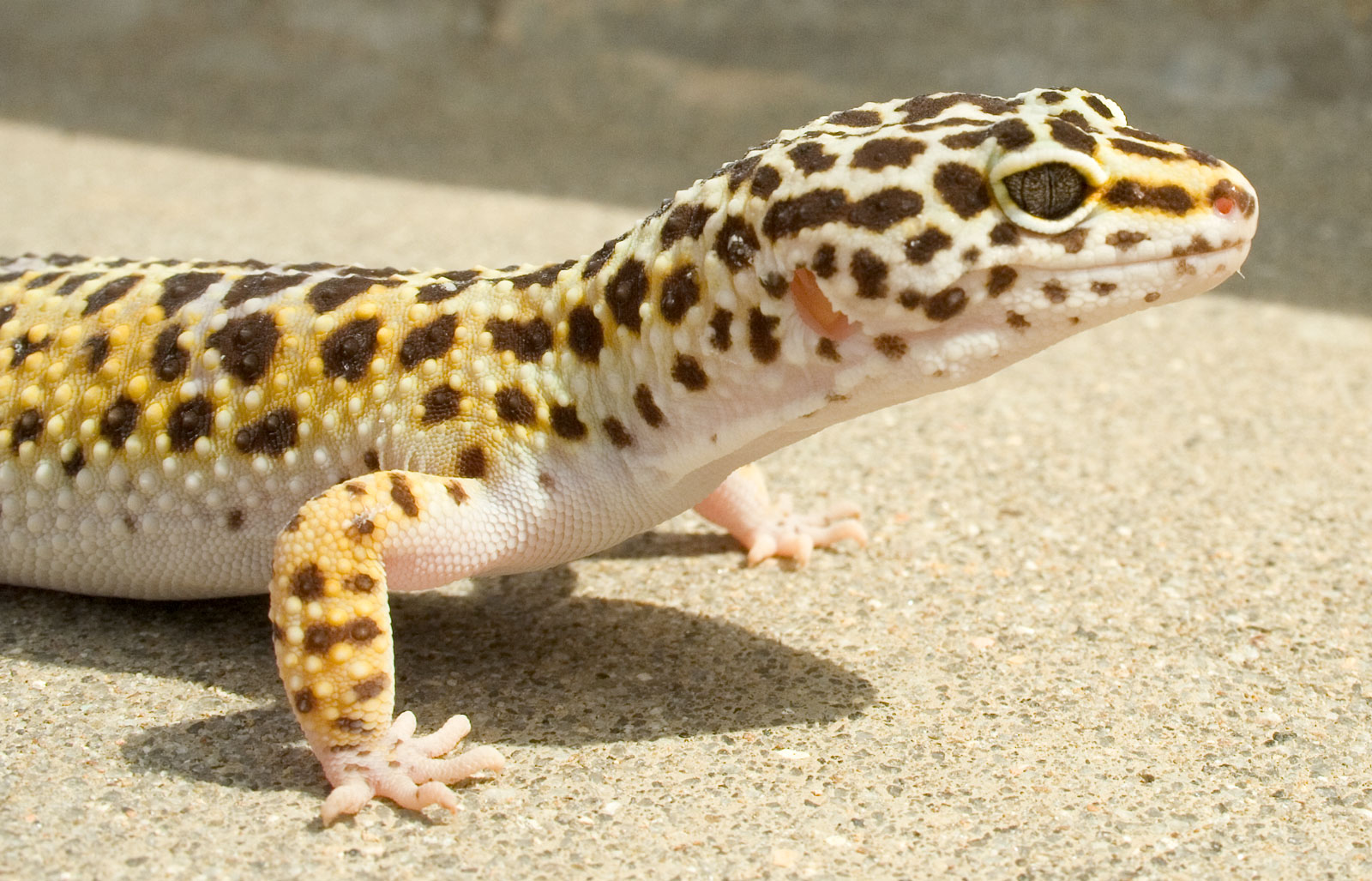
Geckos are known for being expert climbers, able to stick to any surface thanks to tiny hair-like structures on the bottoms of their feet. Along with colleagues in Oregon, Denmark, and Germany, researchers at the National Institute of Standards and Technology (NIST) took a closer look at those structures using high-energy synchrotron, revealing that they are coated with an ultra-thin layer of lipid molecules in an upright orientation, according to a recent paper published in the journal Biology Letters.
Those tiny microscopic hairs are called setae, each of which splits off into hundreds of even smaller bristles called spatulae. It has long been known that at microscopic size scales, the so-called van der Waals forces—the attractive and repulsive forces between two dipole molecules—become significant.
Essentially, the tufts of tiny hairs on gecko feet get so close to the contours in walls and ceilings that electrons from the gecko hair molecules and electrons from the wall molecules interact with each other and create an electromagnetic attraction. That's what enables geckos to climb smooth surfaces like glass effortlessly. Spiders, cockroaches, beetles, bats, tree frogs, and lizards all have varying-sized sticky footpads that use these same forces.
Geckos and their unusual feet have long been of great interest to scientists. In 2013, for instance, scientists at the University of California, Santa Barbara, designed a reusable dry adhesive inspired by the gecko's feet that easily stuck to smooth surfaces, adhering strongly when pushed forward and sliding off when pulled backward. The secret to that directionality was the angle and shape of the fabricated half-cylinder fibers in the silicon-based adhesive. Pushing the flat side down produced a larger surface area for sticking to a glass surface. Pulling the fibers with the rounded side down decreased the surface area so the adhesive could easily slide off.
In 2020, Berkeley scientists investigated why soft, hairy gecko toes only "stick" in one direction. Pull a foot in one direction and the gecko toes will grab onto a surface. Release the foot and the toes will "peel" in the opposite direction, although that doesn't stop the agile gecko from moving any way it chooses. The scientists found that geckos could run sideways as quickly as they climbed upward, thanks to the ability to realign their toes. Having multiple toes helps geckos adjust in order to stick to slippery or irregular surfaces. Those toes that maintained contact with the surface were able to shift orientation and better distribute the load. And because the toes are soft, the animals could more easily conform to rough surfaces.

Left: A gecko foot. Middle: A scanning electron micrograph of hairlike structures on gecko toes, called setae, with “sp” indicating the location of smaller structures called spatulae. Right: A close-up view of an individual spatula.

An illustration of a gecko spatula, a nanometer-scale structure on the animal’s toes that contribute to its grip. The green sheets represent keratin proteins. The gray squiggles represent lipid molecules. Based on data from NIST’s synchrotron microscope.

NIST physicists Dan Fischer (left) and Cherno Jaye (right) at the NIST synchrotron microscope located at Brookhaven National Laboratory.
Despite everything we've learned, little is known about the detailed surface chemistry of gecko toe pads, particularly the setae. So the authors of this latest paper set out to learn more, with particular interest in the possible prominent role that water might play in surface adhesion. "A lot was already known about how setae work mechanically," said NIST physicist and co-author Cherno Jaye. "Now we have a better understanding of how they work in terms of their molecular structure."
According to the authors, recent studies have indicated the presence of water-repelling lipid molecules in gecko footprints and the arrays of gecko setae (they can also be found in the epidermis of reptiles, arranged in a brick-and-mortar pattern). NIST's synchrotron microscope is well-suited to take a closer look at the molecular structure because it is able to not just identify molecules on the surface of three-dimensional objects, but also to reveal precisely where they are located and how they are oriented.
That thin film of lipids (just a nanometer thick) might serve to push away any water beneath the spatulae, the authors speculate, allowing the spatulae to make closer contact with the surface, thereby helping the geckos maintain their grip on wet surfaces. Furthermore, the setae and spatulae are composed of keratin protein, much like the proteins in human hair and fingernails. The analysis revealed that the alignment of the keratin fibers is in the direction of the setae, which might be how they resist abrasion.
Gecko feet have inspired many intriguing applications in the past, including a sticky tape, the aforementioned adhesive, a "stickybot" climbing robot with synthetic setae, and even (I kid you not) a strapless bra design. Jaye et al. envision "gecko boots" that can stick to wet surfaces, or "gecko gloves" for getting a better grip on wet tools as potential applications of their latest research.
"The most exciting thing for me about this biological system is that everything is perfectly optimized on every scale, from the macro to the micro to the molecular," said co-author Stanislav Gorb, a biologist at Kiel University in Germany. "This can help biomimetic engineers know what to do next."



3175x175(CURRENT).thumb.jpg.b05acc060982b36f5891ba728e6d953c.jpg)


Recommended Comments
There are no comments to display.
Join the conversation
You can post now and register later. If you have an account, sign in now to post with your account.
Note: Your post will require moderator approval before it will be visible.